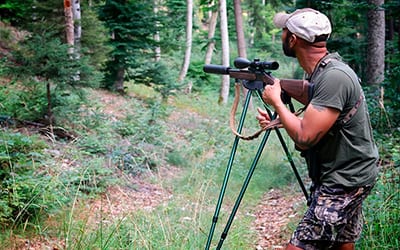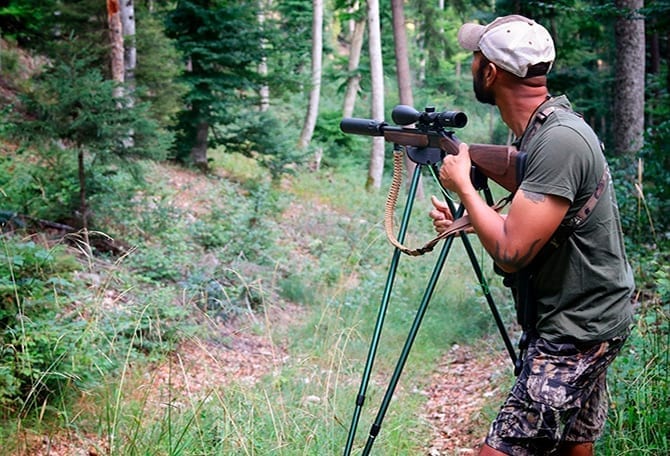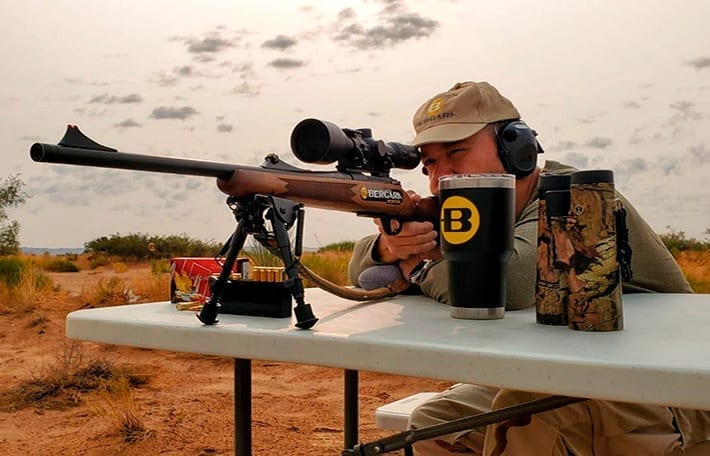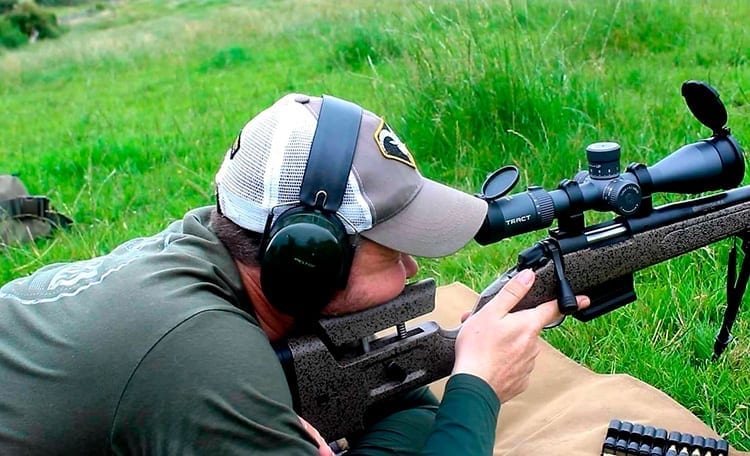Understanding basic Marksmanship

Understanding basic Marksmanship
Al Louangketh
After months of reading and answering some questions in the various shooting and hunting groups on social media, I figure maybe we need to do a blog about the fundamentals of shooting and discuss some important topics that covers basic marksmanship.
I retired from the U.S Army after 20 years of service, I served as an Infantryman and also did a two-year tour as Drill Sergeant at Fort Knox in Kentucky during my career. Training new recruits on basic marksmanship on the various weapons the Army uses for 3 weeks straight is one of the hardest parts about that assignment and I want to bring a bit of that knowledge into this blog.
First and foremost, this blog is intended to provide a little insight for the new shooters to take into consideration and help expand on this topic in order to provide a basic understanding on the four main pillars of marksmanship.

Photo: The shooter is the foundation of rifle marksmanship. Everything learned will help benefit him or her to become more proficient in putting the bullet where it needs to go.
I won’t go into a lot details as it can turn into a book, and there are too many different styles of shooting that has been categorized into various disciplines that just need a little more thorough explanation, especially when we venture into competitive shooting. On this blog I will just focus on the basic fundamentals that most of us have been taught.
Shooting fundamentals don’t change, equipment does and a shooter needs to be able to adapt to those changes, but if he or she doesn’t have the knowledge or basic understanding on how to use and implement that equipment, then it could lead to situation we all prefer not hear about.
The foundation for learning and understanding safe weapons handling and basic marksmanship begins withthe shooter. Understanding the safe handling and the basic shooting fundamentals is the key to putting the bullets where it needs to go. This should be one of the top prioorities before focusing on anything else.

Photo: Understanding your rifle, the set-up and choice of ammunition are all part of the foundation in building and improving on your shooting skills.
Basic rifle knowledge; let’s start off with this topic to include general weapons handling. Safety is number one in this category. Understanding the function of your rifle base on the type of action it comes in is an important foundation as a shooter, different action functions differently and you want to understand that process and how your rifle functions within the working mechanism of its design in order to be proficient in your ability to learn and understand the basic functionality of it. Understanding your firearm will help you execute a consistent control over your firearm and allow you to control it the way it was meant to be control, from loading to firing and or unloading as needed in a safe, consistent and proficient way.
Below are some important guidelines to consider. Most countries require that you take classes or join a reputable shooting club so you can learn about the safe operation on how to handle a firearm before you are even allowed to touch, shoot and own one.
Basic rifle knowledge and handling:
- Safe handling and safe storage of your firearms
- Understand the design and features on your rifle
- General knowledge in ballistic, barrel length, barrel design and options
- Components that make up your firearm, interchangeability and customization
- Understand twist rate and the types of ammunition that will function better for those twist rate
- Safe loading and unloading of your weapon
- Correcting malfunctions, errors and proper clearing procedure
- Front and rear sights adjustments for iron (open) sight firearms
- Assemble and disassemble of firearms
- Maintenance, cleaning and storage
- Know how a firearm function in order to find the action and design that best suits you
- General knowledge on the different types of calibers, cartridges and their design
- Extra external components for your firearm; suppressors, optics, bipods
- Laws and regulations governing the ownership of firearms and its use
The core fundamentals of marksmanship training vary from trainer to trainer and some will add on to the basic four pillars, especially when you move up to the competitive stage of sport shooting. I will only cover just the basic element of the four main marksmanship fundamentals that I think a new shooter needs to understand and comprehend. Look further into researching these four fundamentals of marksmanship and learn how to implement these core training values into your practice session.
- Steady position: No matter if you are shooting from a support or off-hand, try to achieve a steady position as much as possible. know how to correctly grip and handle your weapon during firing and non-firing stances. You also will need to learn how to position your elbow, placement of your cheek for correct eye relief, supporting the weapon with any addition material or sling to assist in attaining a steady position, how to relax your muscles, and feel the natural point of aim.
- Correct sight picture: To achieve the correct sight picture, the aiming fundamental includes correct sight alignment and proper eye focus and relaxation. Understand the process of attaining a correct sight picture with or without optics.
- Breath control: Practice proper breath control in order to hit what you’re aiming for. When you fire the weapon, we don’t recommend you holding your breath, but that natural fluid breathing exhale pause before you inhale again should be the zone where the weapon is fire. Improper breath control will tend to cause the bullet to move up or down and it will show on paper.
- Trigger squeeze: In the Army, we taught new recruits from the early beginning of their marksmanship training to not pull the trigger or yank it, but to gently squeeze it in working connections with the top three fundamentals. We focus to ensure that the first joint of their trigger finger is the main contact point for the trigger. Pulling the trigger results in the weapon shifting left or right so that the bullet misses the intended point of aim.

Photo: The four basic fundamentals of marksmanship works in conjunction with one another to produce the desire result in putting the bullet where it needs to go.
These are the four-basic core of marksmanship that professional shooters and experience hunters have learned to improve on their shooting skills. There are a lot of online information out there that will go further into details about these topics. Whichever you prefer, most information will cover the basic understanding and techniques use to help new shooters gain some valuable insight to expand on their knowledge to become a better shooter.
I didn’t mention the four-shooting position as well as tools and other training aids for a reason because it deserves another write-up for a later blog. In closing out this article, all of us just got to be minded that firearms are tools meant to accomplish specific task, knowing how to work them safely is an important part of gun-ownership as we try to make informed decisions about them and how to use them safely and properly. If you enjoyed reading this blog and have ideas or tips on how to improve on these skills or advice for new shooters, I would love to hear from you. Until then, shoot straight and be safe out there.
About the author:
Dr. Al Louangketh is the international blog editor and field representative for Bergara Rifles International. He holds a PhD in Wildlife Science conducting independent research with international programs and organization dealing with aquatic mammals. He is a retired U.S Army Veteran living and working from Germany.
